𝟔𝟎𝐭𝐡 𝐀𝐧𝐧𝐢𝐯𝐞𝐫𝐬𝐚𝐫𝐲 𝐨𝐟 𝐭𝐡𝐞 𝐆𝐫𝐨𝐠𝐠𝐬
𝐆𝐫𝐨𝐠𝐠 𝐨𝐟 𝐭𝐡𝐞 𝐌𝐨𝐧𝐭𝐡
In 1965, 60 years ago, my father, John Hughes made his first sale and Groggs as a concept were born. Sadly, we can’t be sure what that piece was but it gave my father the confidence to carry on with his plan. He had decided in the early 60’s to stop commuting to Cardiff where he was working in City Hall as a clerk and start making things out of clay at home with the idea of becoming an artist. With no formal training and no previous experience, it was a shock to my mother and my grandparents, but my father was determined to lead a different life. It was something that in the 1960’s seemed possible and so our story began.
Our 60th anniversary Grogg of the month is designed to illustrate the complicated journey of the Groggs from their humble beginnings in my father’s shed to the figures we still make today. We will begin with a very unusual piece made by my father in the early sixties.
60th Anniversary Grogg of the Month - May
The Celt ~ Bendigeidfran
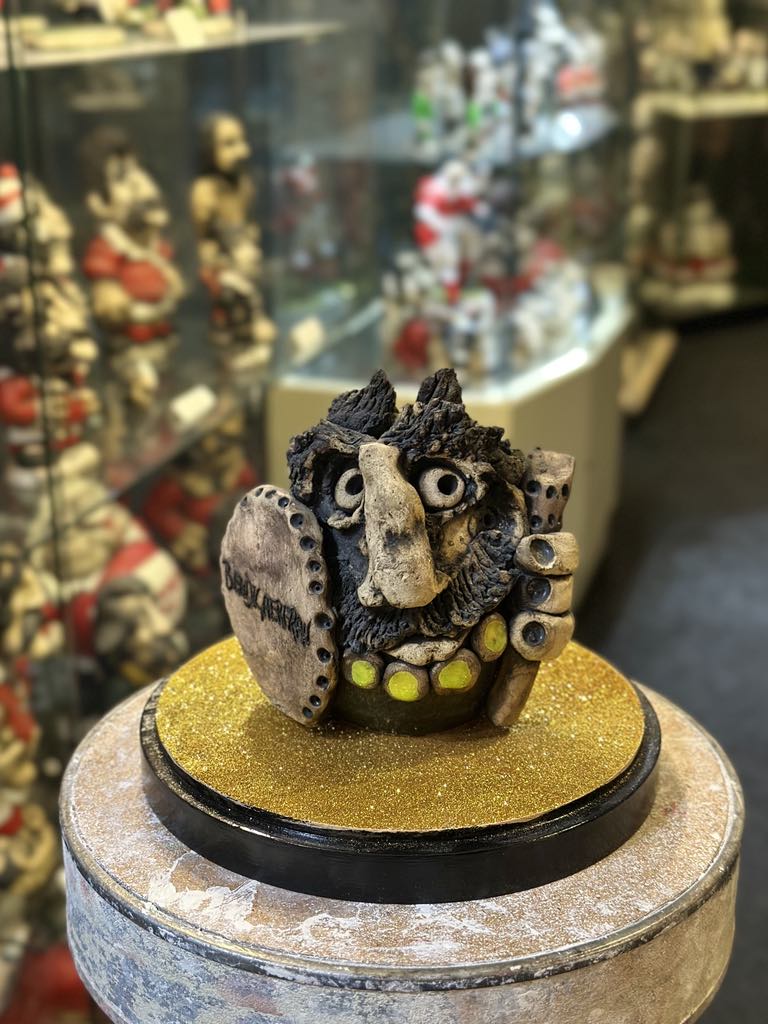
So this is where I started my professional career in clay…. albeit for pocket money while I served my time in Pontypridd Boys Grammar School. Sadly, formal education was not for me, so I just did my best to get through it, concentrating on life outside school and the exiting opportunities afforded me in my father’s studio and workshops at the John Hughes Gallery, as the Groggshop was known in the early 70s.
As I have explained, all three of us, myself and my two sisters Cathy and Kim, had all been making things since we were old enough to stick our hands in a bucket of clay. When it was raining it was an easy way for Dad to keep us quiet while he carried on with his projects.
My first love, as a subject, was of course animals. I was obsessed with nature and spent hours drawing and reading about wildlife. Therefore, it was no surprise the first thing I made that actually sold was a figure of a gorilla. I had been on a school visit to Bristol Zoo in 1971 where I saw Delilah the gorilla nursing her newly born baby Daniel. This inspired me to make a figure of her which not only sold for the huge sum of £2 but also got me photographed for the local newspaper…. the Pontypridd Observer.
However it was the Celts which were to become a steadier flow of pocket money for me… mostly spent on sweets and ice cream tubs! Dad had already made his Celtic giants and it wasn’t long before I was following his lead. The subject was fascinating…having been raised on stories of Welsh defiance in the face of the Roman occupation. You could basically make it up as you went along and have some fun with the theme of what was essentially “Wild Welshmen”.
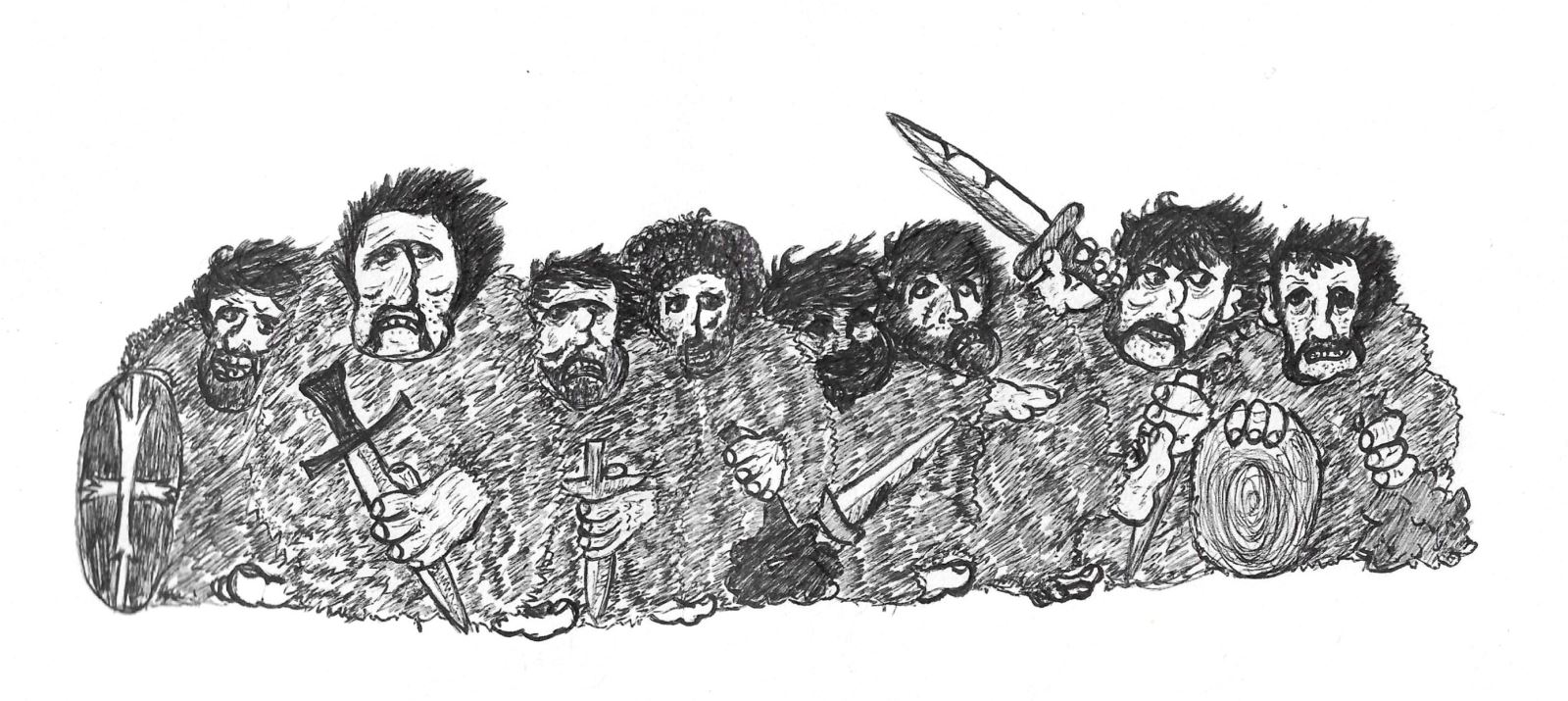
The Celts - biro drawn sketch by Richard aged 12.
In the early seventies the process was made a little easier by using hand thrown bodies. These were basically ovoid shapes thrown on the wheel…. allowed to partially dry overnight and then hand modelled on with fresh clay. This is where I first got to grips with the human face in a pretty loose and humorous fashion and it was great fun. Big broken noses, missing teeth, wild scruffy hair and shields and spears…. what wasn’t to like. The rate wasn’t bad either. At 50p a piece I didn’t take much convincing to spend time in the studio with Dad letting my creative side run free.
This particular figure is a great example as it not only has the name of the Welsh giant Bendigeidfran scored into his shield with a needle but also has glazed beads around his “waist” representing a belt. The Celts were renowned for their ornamentation and elaborate jewellery and reflecting that, each of these pieces was made unique in the way they were decorated.
I’m grateful, once again, to Simon for spotting this piece on eBay and bringing it home to the museum. I was especially keen to get this particular Celt back as it has my sneaky signature… R. Hughes, Wales scored into the clay underneath the piece.
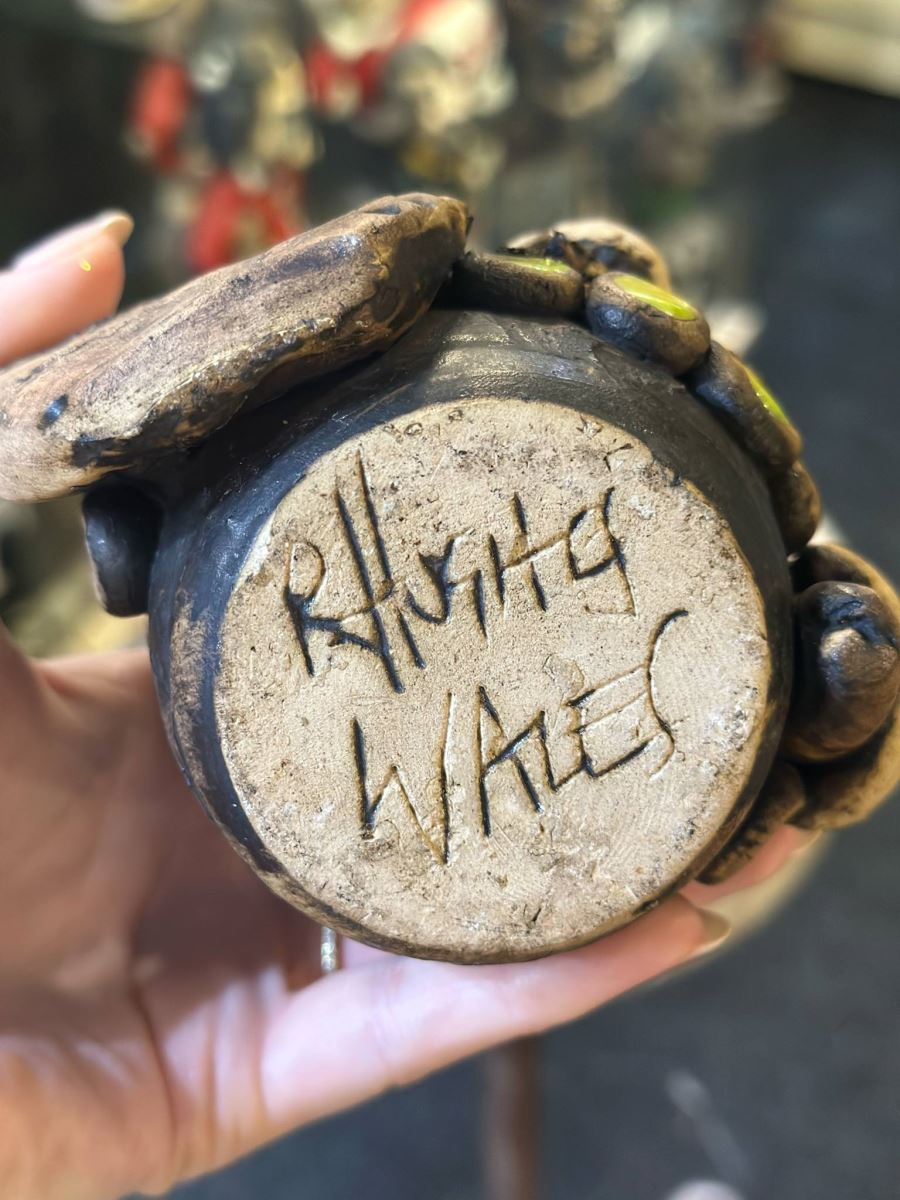
60th Anniversary Grogg of the Month - April
The original Gareth Edwards!
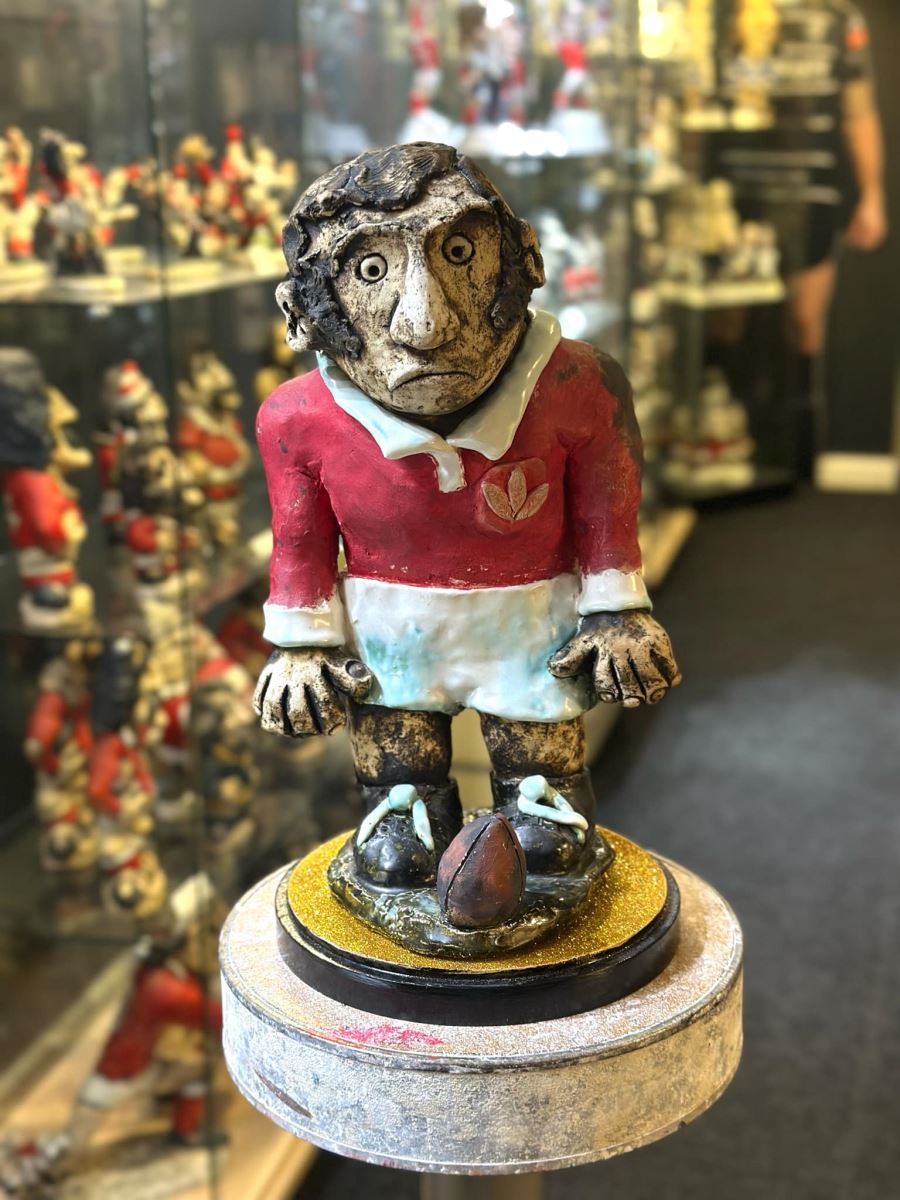
Finally….. I hear you say… we get to the rugby!
We are now back in early 1970 and just before our move to the Danygraig Arms on the Broadway. Dad had already made the switch from giants of the Mabinogion to the giants of Welsh rugby by basically putting rugby shirts on some Groggy looking characters. These weren’t based on anyone in particular but they got the reaction Dad was hoping for.
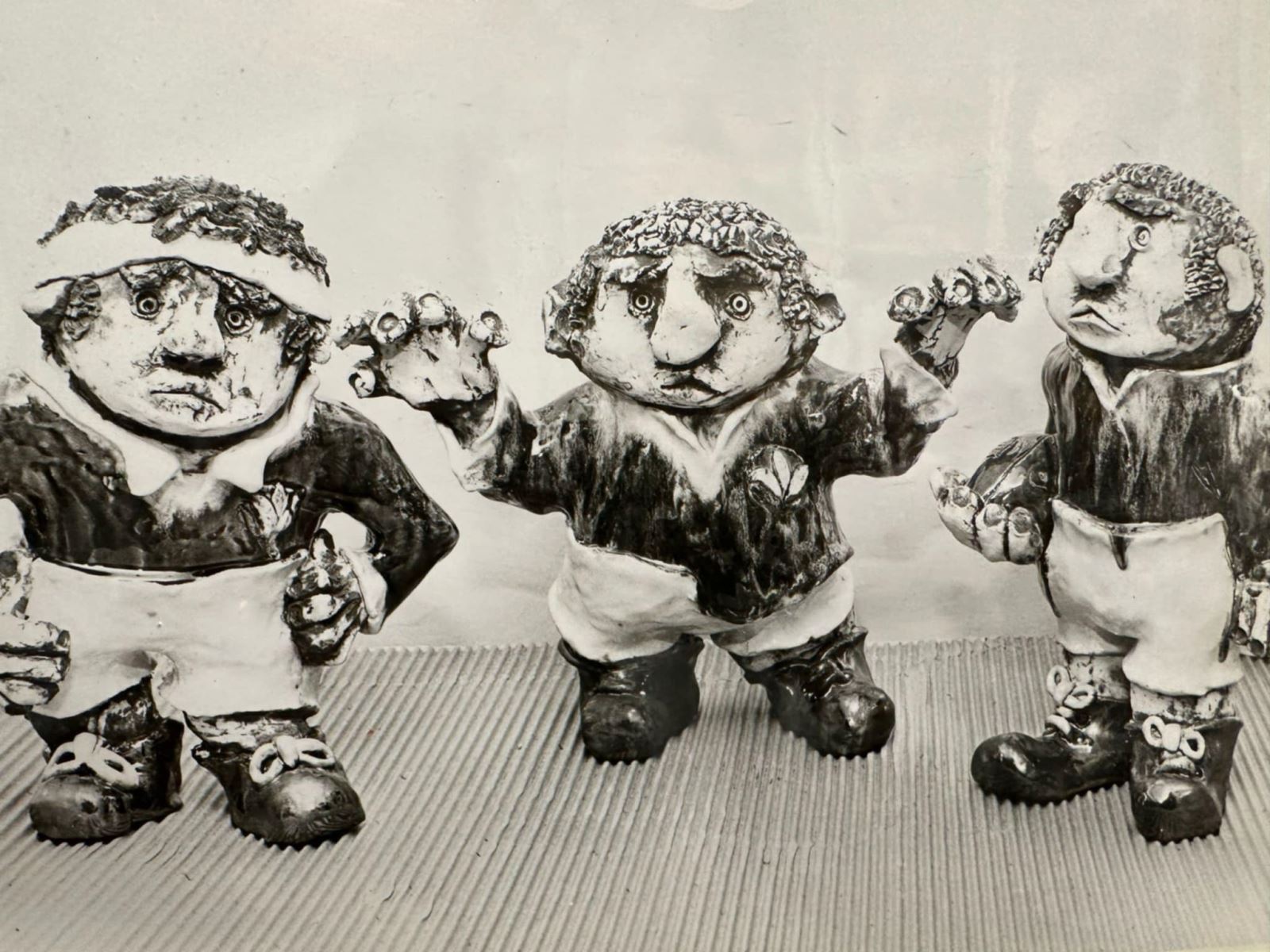
On January 24th 1970 Wales hosted the touring Springboks on a filthy day at the newly emerging National Stadium in Cardiff. Wales had never beaten South Africa but under their youthful captain Gareth Edwards and in appalling conditions Wales came close by drawing the match 6 all.
Gareth scored twice in the match, once from a penalty and with a late try but unfortunately his conversion of his own try went wide. People may find it strange that Gareth was the kicker that day, but I have it on good authority that players just took turns back then….no specialist goalkickers as we have today. It’s even more surprising that Barry John was playing that day but left the kicking to his Cardiff half back partner and captain. My father was so inspired by the young Captains efforts that he decided to make a figure of Gareth kicking at goal.
This is a wonderful piece and we are so lucky to have been able to bring it back to the Groggshop where it inspired so much that was to follow. For me it has everything, even though Dad made some basic errors they don’t detract from the drama of the figure at all and, to me, they only add to its appeal. You may notice the white cuffs and complete lack of socks but the look of determination on Gareth’s face says it all.
The figure is hand built using the buff stoneware Dad adopted from that point on. He has glazed the collar, shorts, cuffs and boot laces but the red is acrylic paint. Dad had tried many times to find a red glaze, but the results were always disappointing, coming out at best a pale amber. He knew how important the red of the Welsh shirt was and made the switch to acrylic paint which became synonymous with Welsh Rugby Groggs from that point on.
I particularly love the three feathers on Gareth’s shirt which were made using a leaf pattern pastry mould “borrowed“ from the College of food technology in Cardiff where Dad had worked for a while. Dad has also made the shirt muddy in places to reflect the awful weather the match was played in that day, something we didn’t do again until I made the 16” George Best many years later.
So, this magnificent figure is where it all began for Groggs and their special connection with Welsh Rugby which still continues to this day.
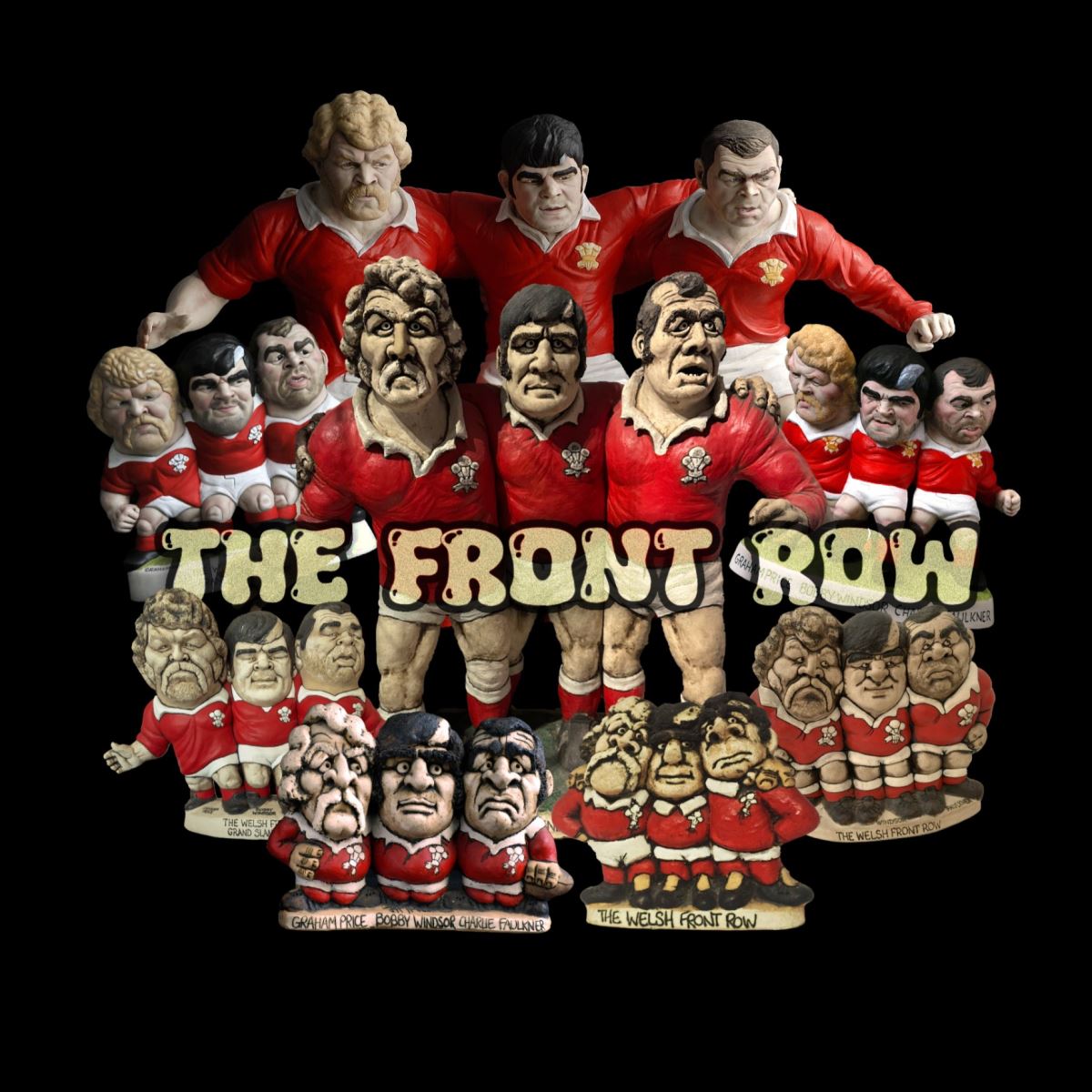
On the 18th of January 1975, three Welsh forwards made history by becoming the first club front row to represent their country as a unit. They would go on to become legends in the sport and the name “The Pontypool Front Row” would inspire fear and respect in rugby nations around the world….. it still does to this day.
.jpg)
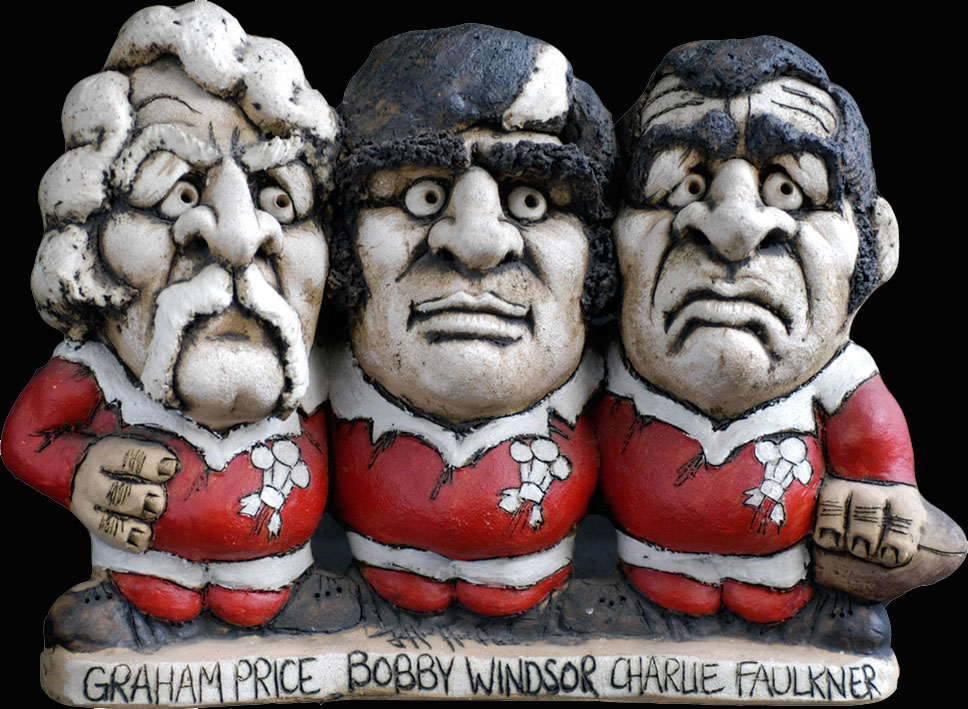
The 70s began well with Wales winning a Grand Slam in 1971 and only missing out on a possible back to back Grand Slam when the Irish game was cancelled in 1972. From that point on Wales’s fortunes varied widely, despite Welsh players contributing strongly to the unbeaten British and Irish Lions tour of South Africa in 1974.
In 1975, Wales’s selectors made the bold decision to cap six new players away from home, in the cauldron of Parc des Princes, Paris. It proved to be an inspired call as Wales went on to register a remarkable win, consigning France to their heaviest home defeat since 1952. At the forefront of that unforgettable victory was the Pontypool Front Row.
.jpg)
%20(1).jpeg)
Bobby Windsor was well established having already been capped by Wales in 1973 against the Wallabies and then earning his Lion’s caps as the test hooker in South Africa. In Wales, with his Pontypool team mates Charlie Faulkner and Graham Price either side of him, they developed a platform which ensured the quality ball Wales’s great backs of the 70s era needed to shine. Saying that, it was the young tight-head Graham Price who finished the scoring that momentous day in Paris, running 70 yards to follow up his own kick out of defence which resulted in a magnificent try!
Wales missed out on a Grand Slam that season, with a single, narrow defeat to Scotland, but with the Pontypool Front Row leading the charge, they went on to win two Grand Slams in 1976 and 1978 and many Triple Crowns. These victories ensured the seventies would be remembered forever as the “Decade of the Dragon”.
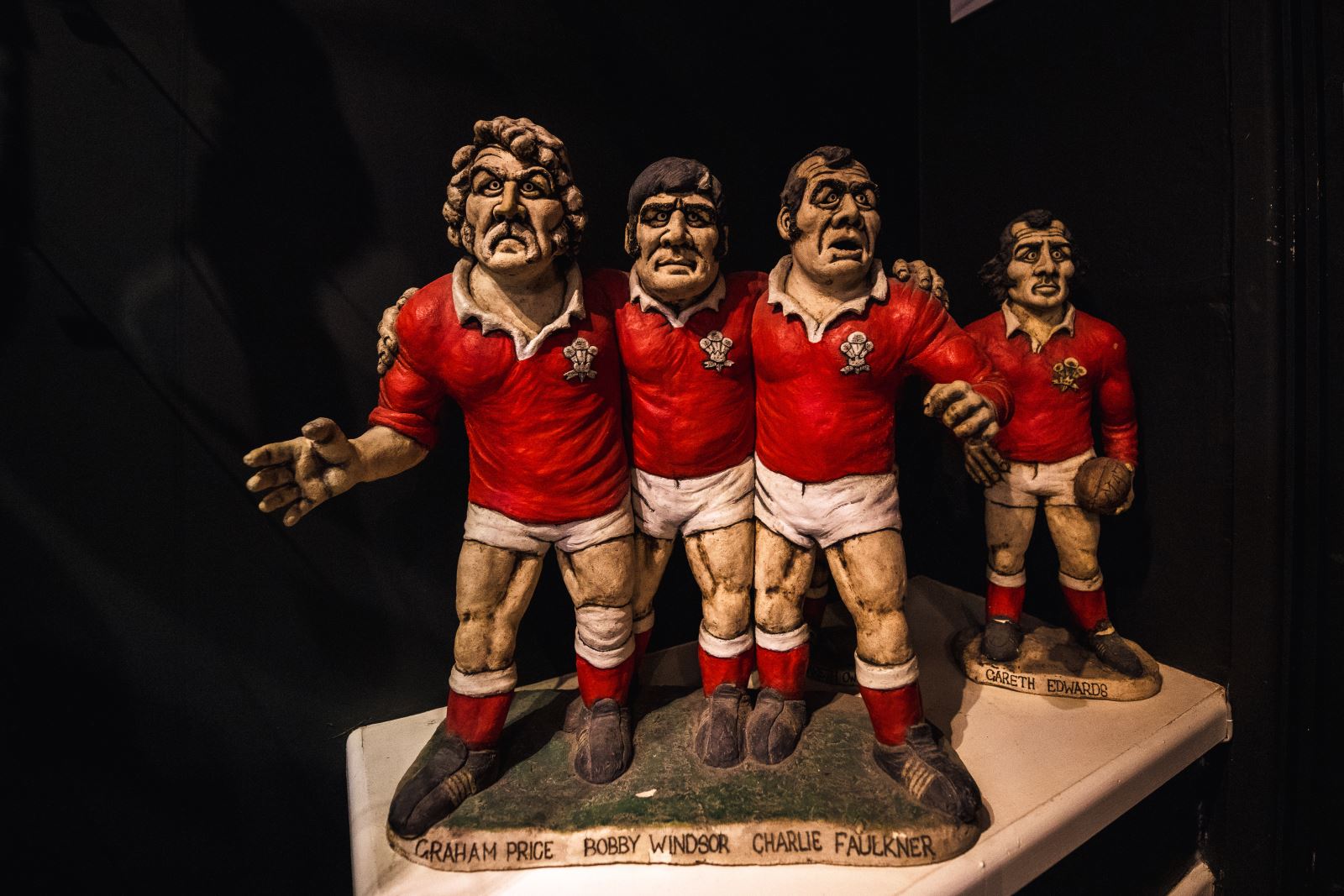
As a young Grogg maker it was an enthralling time to be involved in Welsh rugby. In 1976 the decision was made for me to leave school and join my father in his studio on the Broadway. Dad had been making rugby figures since the early 1970’s but I was hot on his heels, as I loved capturing the features of my heroes in clay. I was soon handed that role on a permanent basis and with it came the unique task of sculpting three faces in one piece - the Pontypool Front Row posed a new and exciting technical challenge for me.
Dad’s front row was the 1971 Grand Slam unit of Denzil Williams, Jeff Young and Barry Llewellyn. I was lucky to have the inspiration of my Pontypool heroes and took on the task with gusto and to be honest, they were born to be Grogged. I loved making them with their distinctive characteristics, but together I think they are the greatest of Grogg pieces.
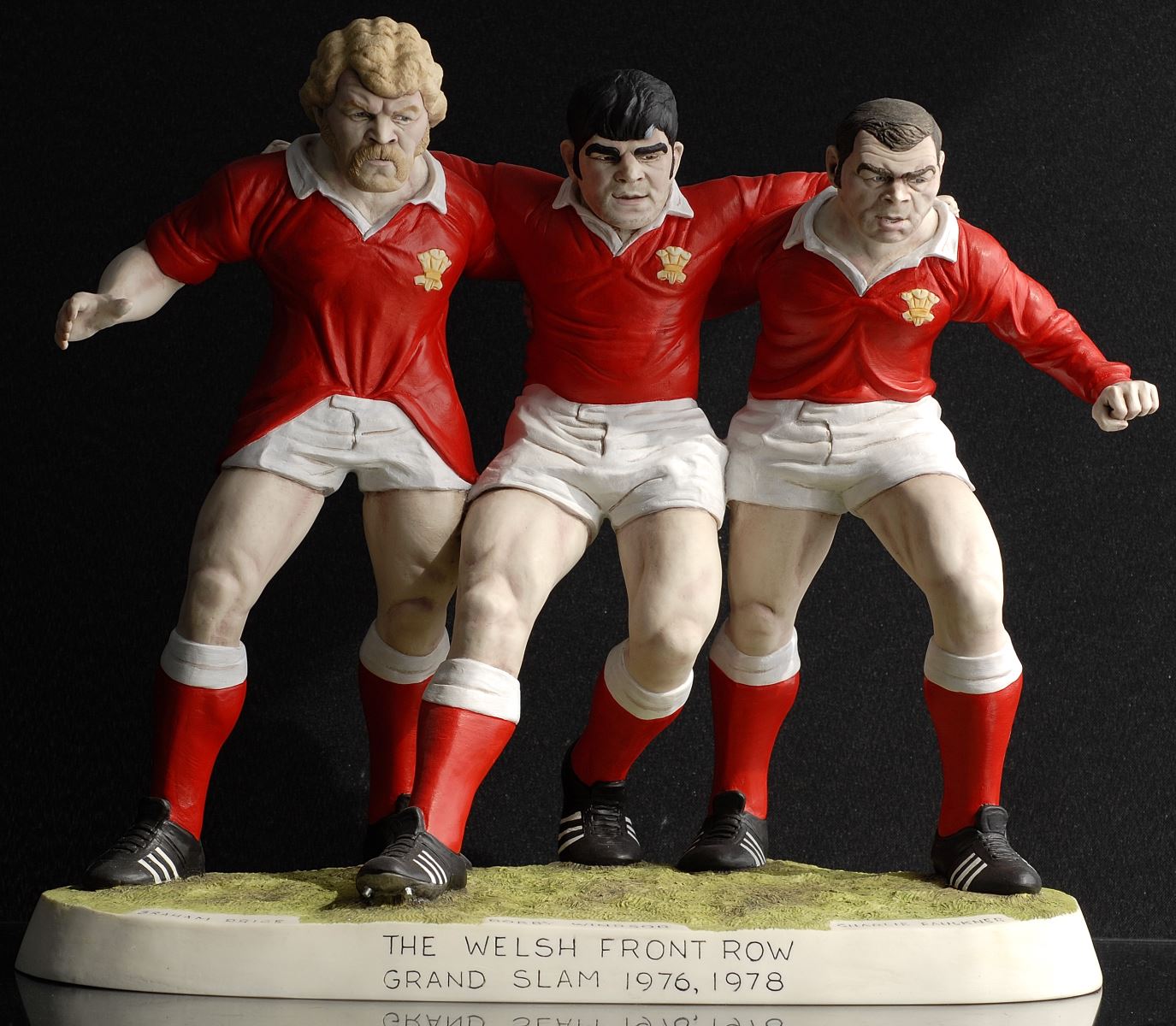
So once again I’ve had the pleasure of modelling this legendary trio to commemorate the 50th Anniversary of their first game together for Wales. And while we have struggled to think of a subject which encompasses 60 years of our history at the Groggshop maybe it is appropriate that this phenomenal triumvirate becomes part of our double celebration, having been there with us, almost since our very beginnings.
50 years of The Viet Gwent and 60 years of Groggs – Coming Soon.
.jpg)
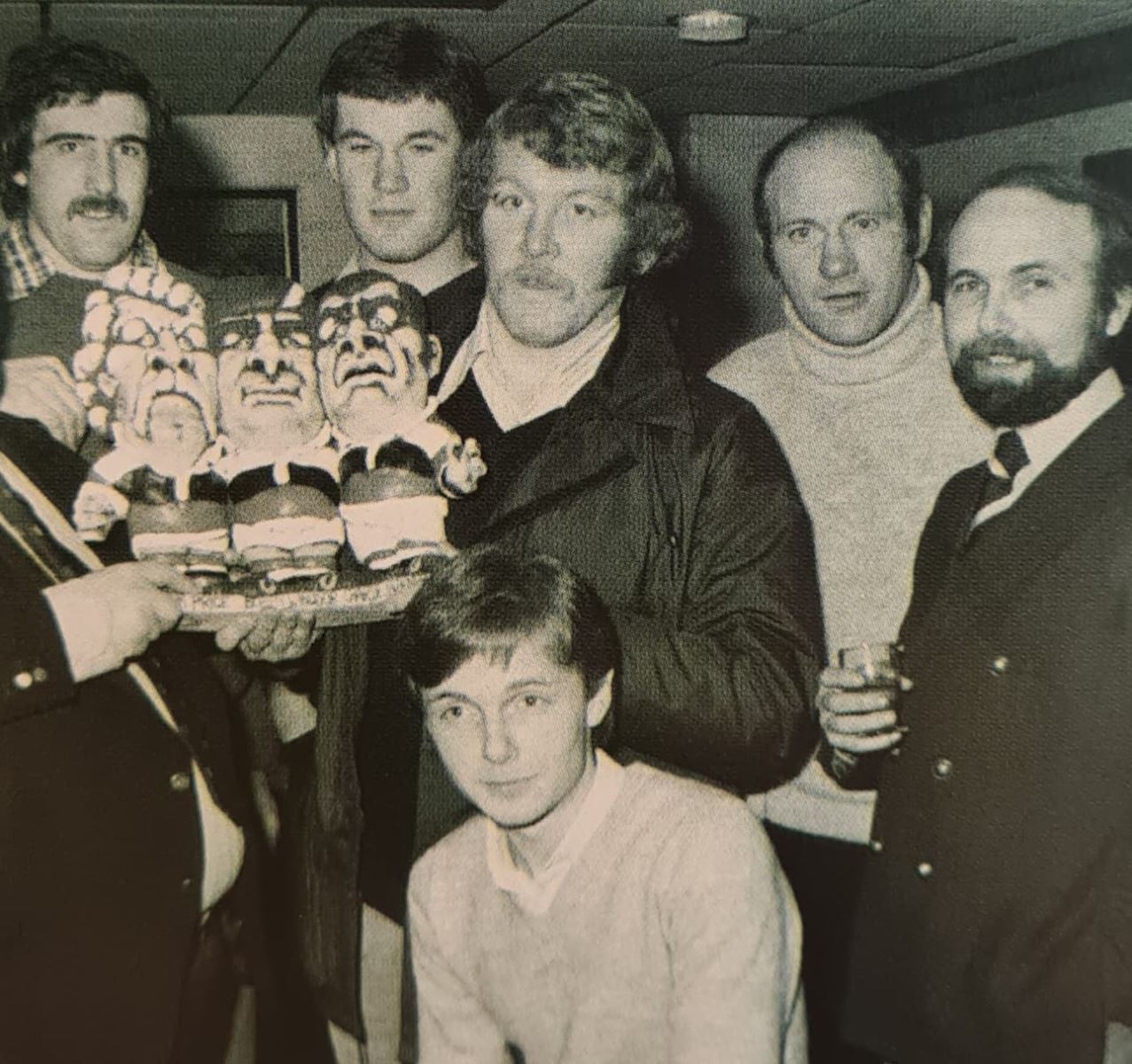
𝐆𝐫𝐨𝐠𝐠 𝐨𝐟 𝐭𝐡𝐞 𝐌𝐨𝐧𝐭𝐡
In 1965, 60 years ago, my father, John Hughes made his first sale and Groggs as a concept were born. Sadly, we can’t be sure what that piece was but it gave my father the confidence to carry on with his plan. He had decided in the early 60’s to stop commuting to Cardiff where he was working in City Hall as a clerk and start making things out of clay at home with the idea of becoming an artist. With no formal training and no previous experience, it was a shock to my mother and my grandparents, but my father was determined to lead a different life. It was something that in the 1960’s seemed possible and so our story began.
Our 60th anniversary Grogg of the month is designed to illustrate the complicated journey of the Groggs from their humble beginnings in my father’s shed to the figures we still make today. We will begin with a very unusual piece made by my father in the early sixties.
60th Anniversary Grogg of the Month ~ March
Two Jesters
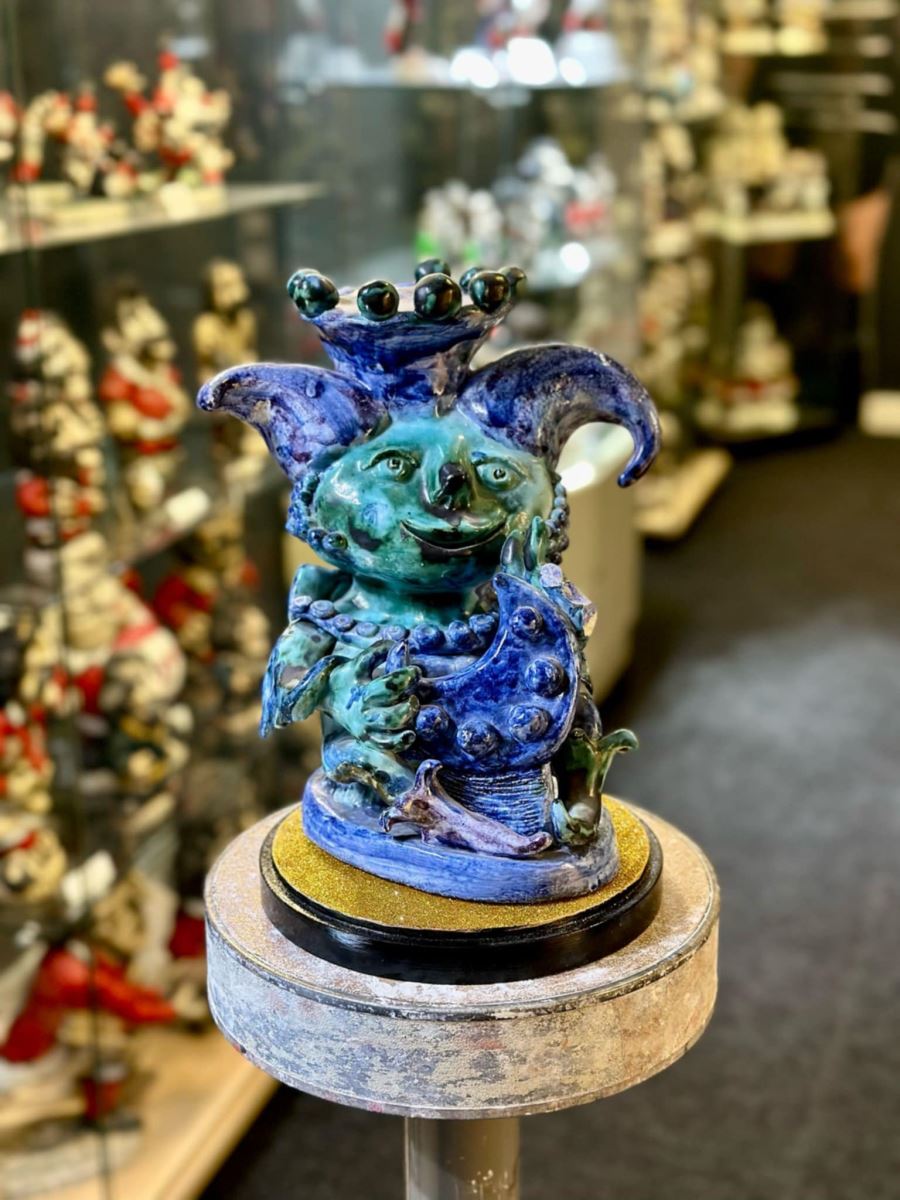
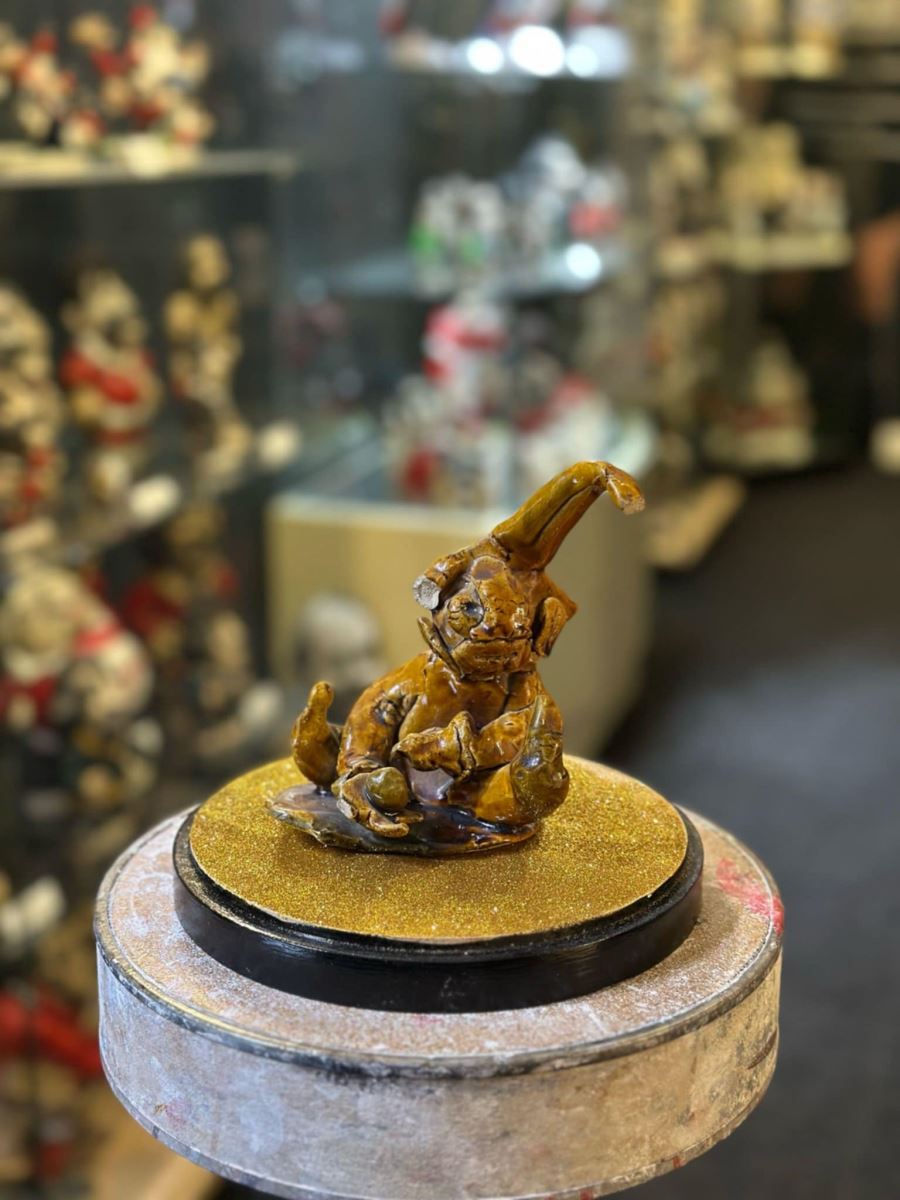
A slight cheat this month as there are two Groggs of the Month but I’ve done it to illustrate the way we, as children, literally learned at our fathers feet how to make things out of clay. All of us, my sisters Kim and Cathy and myself spent time in the shed with Dad when the sun wasn’t shining. When the weather was fine we were very lucky. We were allowed the freedom to roam the old disused Barry railway line, which ran behind our house on Llantwit Road, Treforest from a young age. Free from parental supervision we occasionally got into trouble …but mostly it was me! I was either falling out of trees or crashing into walls while riding bikes without brakes but I look back on my many scars as badges of honour. When we weren’t running wild in the ferns and streams we were allowed to share Dads studio space as I do now with my grandson Milo and Cathy’s grandson James. The difference then was we didn’t have the distraction of I pads and computers and those precious hours awakened something in us all. The jesters are a perfect example of this. I can see why the subject matter would have appealed to Dad.
The jester or fool played an important role historically in the royal courts of Europe and developed from the medieval comedian or musician to become a person who could “speak truth to power” without sanction from the ruling party of the day. This would have touched a nerve with Dad who was never one to take authority figures too seriously!
His beautiful jester figure is hand modelled and highly glazed and bears, once again, a lovely hand painted signature and is dated 1965…. taking us right back to our founding date. I particularly love the way he has made the hair using tiny balls of clay.
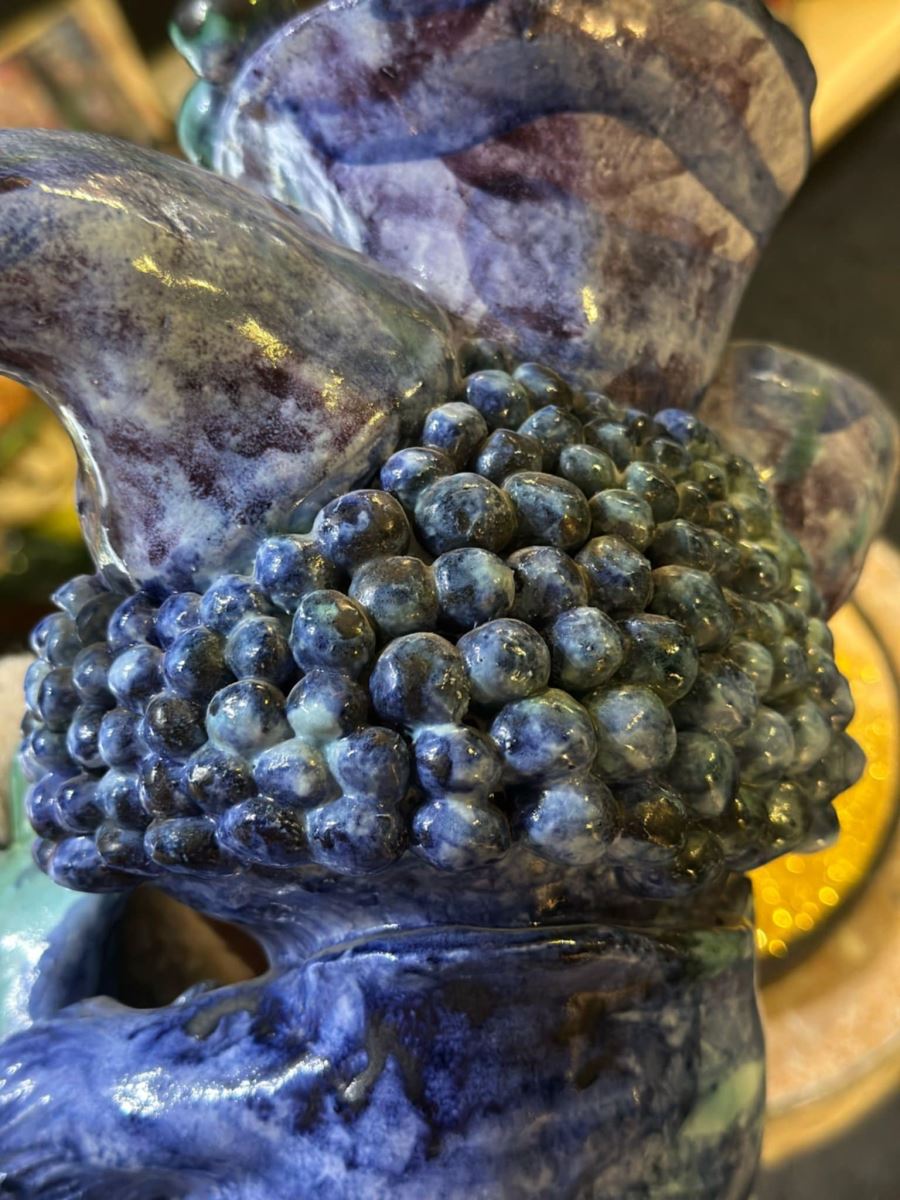
My version has suffered a little more from the ravages of time but I’m glad it still exists despite him missing two of his three prongs on his jester’s hat! There’s an obvious correlation between the two pieces and they take me right back to that first shed. It’s apparent to me now that as a boy of six I was doing my best to impress my father who had given up work to become an artist and ended up sometimes babysitting his brood while my mother worked as a teacher to keep us fed and clothed. Both figures now sit, side by side, in pride of place in our museum. I look at them often and reflect on how we got where we are today…. sixty years on.
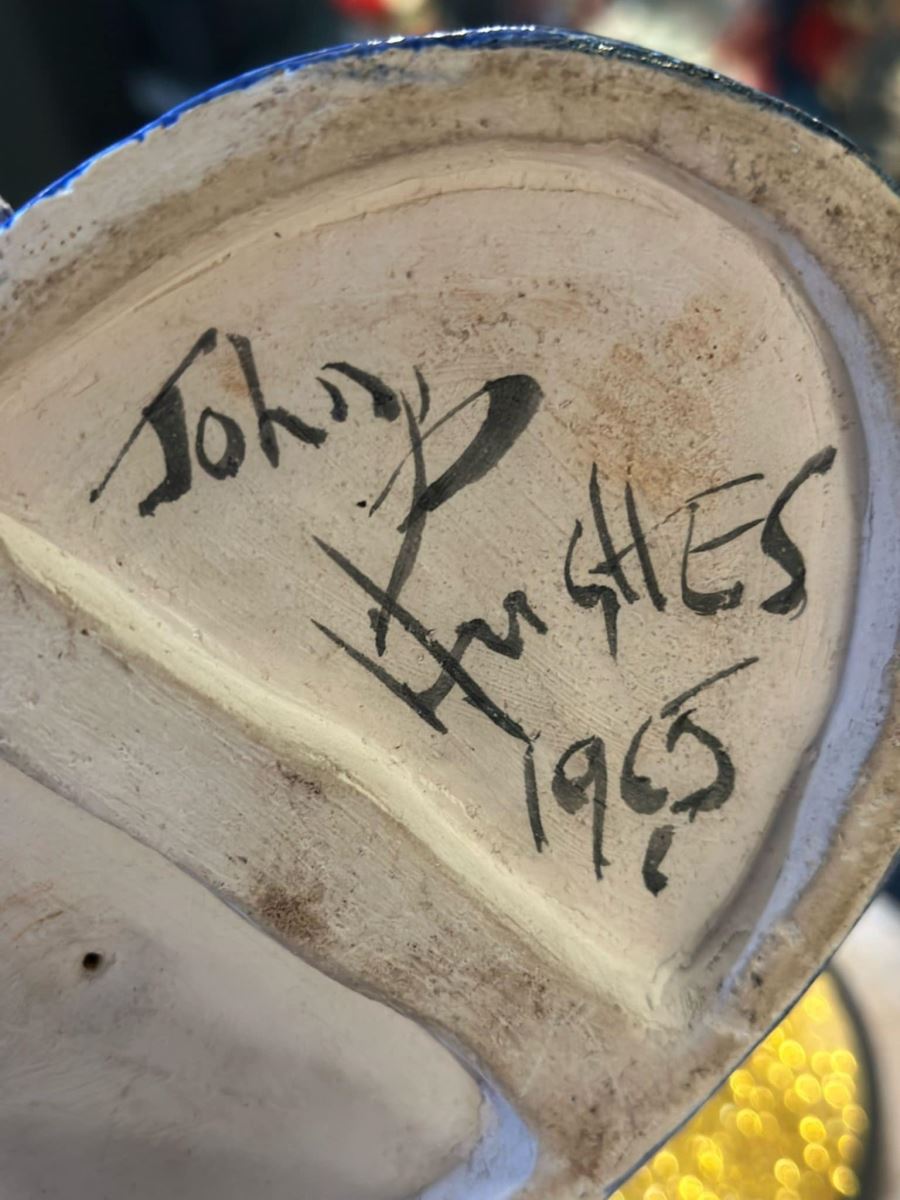
60th Anniversary Grogg of the Month, February
Soldier Blue
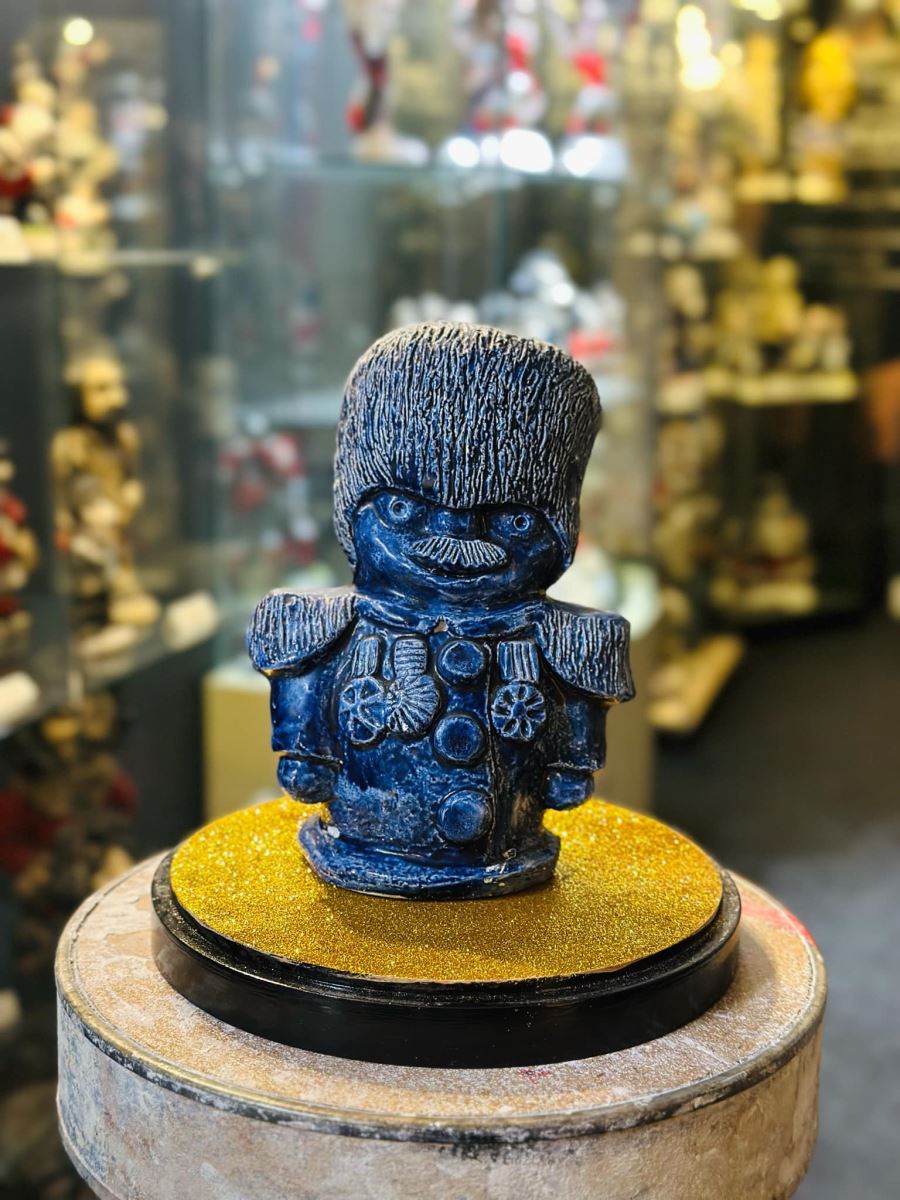
I have to thank my cousin Nicholas for February’s ‘Grogg of the Month’. It has been in his family since it was made in the early sixties and from what he told me he had saved it from destruction more than once, even rescuing it from the garden where to be fair some of our very early pieces also ended up!
It also may explain the subject matter as a soldier in a busby was a change for Dad. As I explained last month my father’s first efforts were based mainly on characters from the Mabinogion or the Old Testament, so this piece is doubly unusual. He may have made it specifically for his brother David who had a lifelong obsession with militaria. David’s home was like a museum full of military memorabilia which was fascinating to us as children.
The Blue Soldier dates back to the very early days of my father’s journey into clay and bears a beautiful hand painted signature underneath the base along with a stamp declaring… “Treforest Ceramics”!
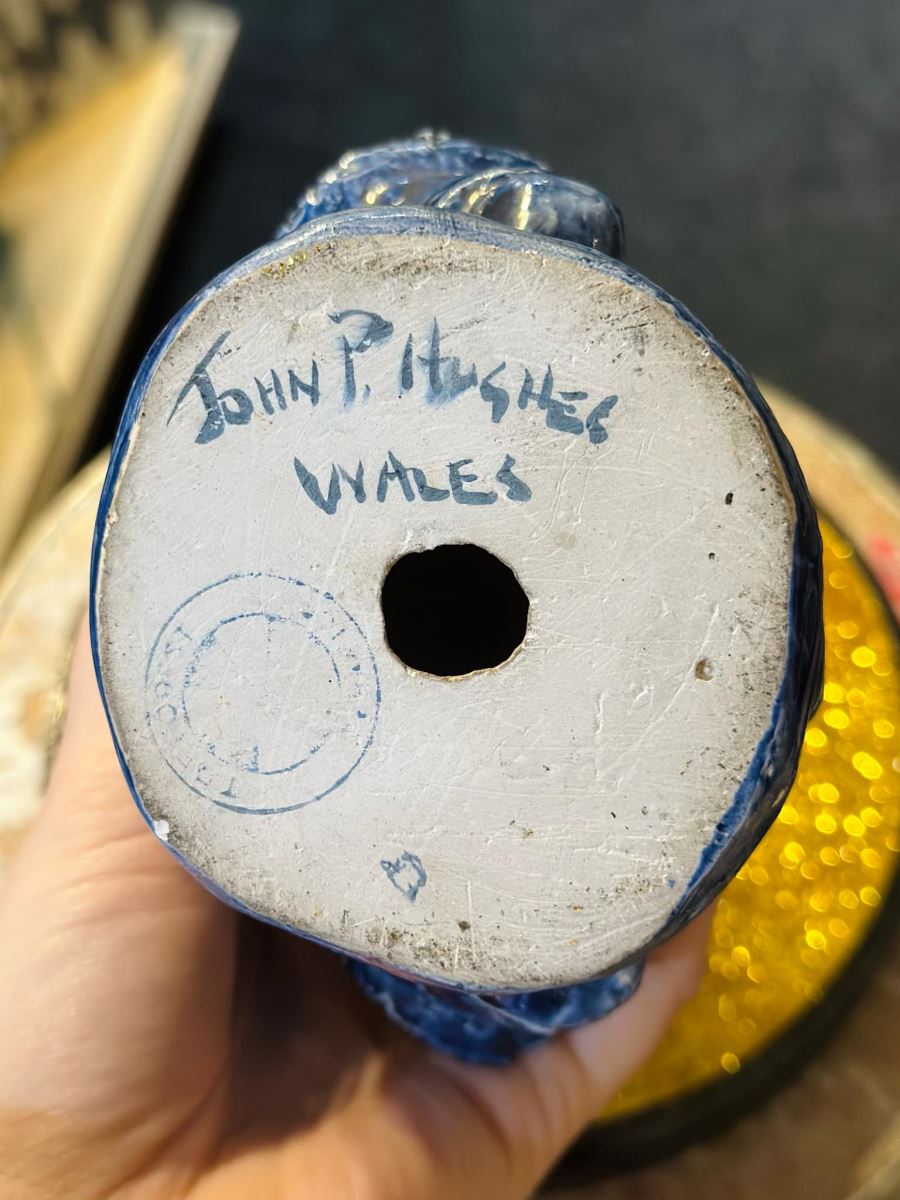
The Soldier is different from other early figures as it is hollow and slip cast. Dad experimented with mould making straight away, mostly one-piece plaster moulds for making ash trays and plates which he then glazed. This soldier is a little more complicated as it was made using a two-piece plaster mould which meant once the master figure was made it could be replicated many times if desired.
The slip (liquid clay) was made in a fascinating way. Long before we bought our blunger, which could make gallons of slip at one time using up to eight bags of clay for each mix, Dad made his slip using powdered clay. If we were very good, we were allowed to sit at the edge of the huge drum of water and watch as Dad poured the powder in. It sat on top of the water like an island and we were instructed not to poke or disturb the process in any way which for young children was very testing.
Sitting in Dad’s first shed, which was sort of an extension to the house in Llantwit Road, we would watch fascinated as the island of powder slowly crumbled into the water. We weren’t allowed to touch the island as any disturbance would lead to air bubbles in the slip which could become a serious problem when firing slip cast pieces sometimes leading to explosions. Once the majority of powder had disappeared under the surface, we were allowed to VERY SLOWLY stir the grey sludge with a large wooden paddle until it became a beautiful smooth creamy texture. Once all the bubbles had popped on the surface the slip was poured into the mould which was tapped gently to ensure again that no bubbles were trapped in the clay. Once the plaster had absorbed the moisture from the clay a skin would form on the inside of the mould and the excess clay was gently tipped out leaving the shell of the figure inside. This would have to dry overnight and then be “broken out” the following day. Once fettled (removing seams) the figure would be fired, glazed and fired again producing the finished Blue Soldier. It is a slightly more complicated method than straight forward hand modelling, but this process was to become crucial in the development of Groggs in the 1970’s.
The Blue Soldier was lent back to us by Nick and is on permanent display in our museum at the Groggshop.
Grogg of the month, January 2025
Branwen and the starling
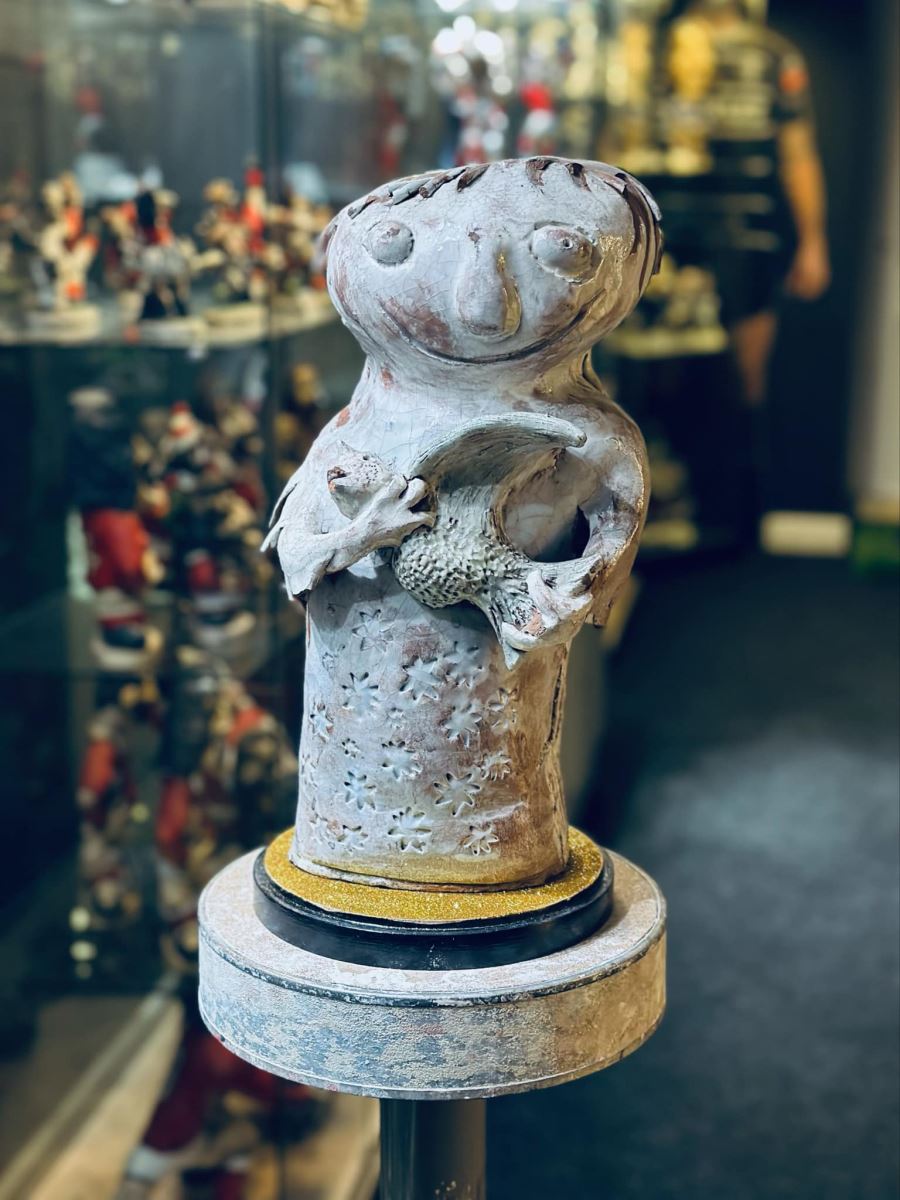
I know I’ve recently talked about another Branwen figure which has returned to us and is also on display in our museum, but this piece is a lot older and very different in style. This Branwen perfectly illustrates the original and unique things my father began making when he first decided to become an artist. To us now she may look a little odd compared to the figures most Grogg collectors are aware of but personally I find her fascinating. My father was influenced by many people …. Picasso, Marc Chagal and Jacob Epstein amongst many and this influence can be seen in this unique handmade piece.
The choice of terracotta is unusual, and it makes this piece very rare. Dad quickly moved onto using a buff stoneware which was easier to glaze although terracotta is a beautiful clay to model with. As I have said Dad had no experience with these materials and he gleaned as much as he could from library books. Finding books on ceramics in those days wouldn’t have been easy so my father experimented a lot and learned from his mistakes. He even built his own kiln and tried to use the household gas supply to fire it up. In the end he only managed to gas himself and luckily there were no explosions but somehow my parents managed to find the money to buy a small electric kiln, and the process became a lot safer.
Dad would have hand built this piece probably using the coil technique, building it up coil by coil as the clay hardens. When it was finished it would have been fired in the kiln to around 800 degrees and then glazed and fired again at a higher temperature.
I can remember going with Dad to check the temperature of the kiln which was done by spying through a hole in the kiln wall to see if the temperature cones had melted. Once they had you knew the correct temperature had been reached and the kiln was turned off. Even then you were never certain what was going to appear once the kiln was cool but it was exciting waiting to see what colours the glazes produced.
The subject matter was inspired by the Mabinogion story of Branwen who trained a starling to send a message to her brother Bran the giant who rescued her from her imprisonment in Ireland. My father wasn’t phased by the rejection he received when people saw his early work, in fact it seemed to drive him on, but I suppose we can understand why the public found it difficult to understand what Dad was trying to do.
Looking back it’s amazing to me how one person’s desire to do something different with his life has affected us all here and changed our lives in the process.